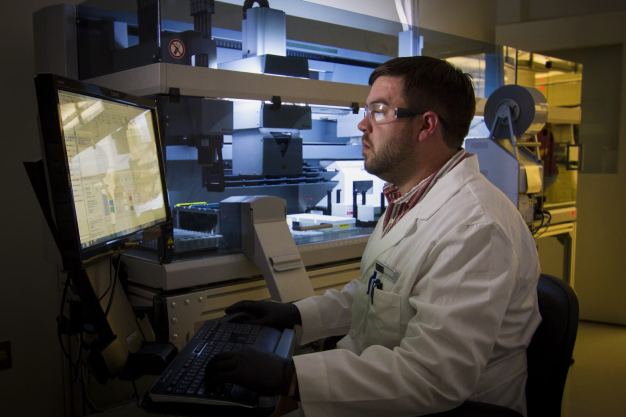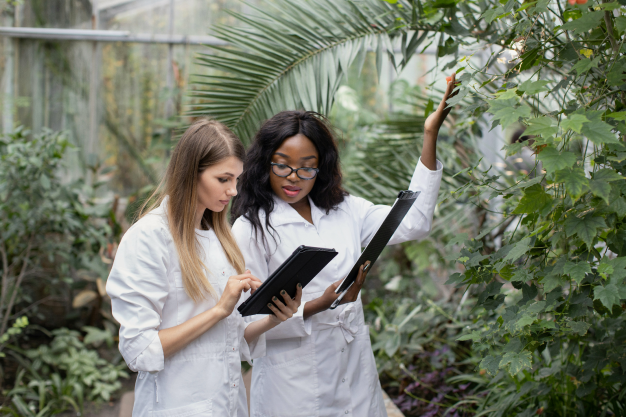The Art Of Experimentation: Ensuring Creativity In Science Labs

In an era where innovation is the linchpin of progress, the bustling biotech and life sciences sectors in Massachusetts have stumbled upon a novel approach to one of their most pressing challenges – finding affordable, well-equipped laboratory space. This challenge, although seemingly logistical, has profound implications for the essence of creativity in science labs.
Fusing Creativity With Scientific Rigor

Forget the traditional, solitary lab setups; here, shared laboratory spaces have become the crucible for creativity, allowing startups to leapfrog into their research without the hindrance of setting up their own labs. Somewhere within this innovative ecosystem, spaces like www.labshares.com provide not just the physical resources but also a community that vibrant startups desperately need.
The beauty of shared laboratory spaces goes beyond mere cost savings; it lies in their ability to cultivate a creative mindset crucial for scientific breakthroughs. Picture a space where researchers from various fields bounce ideas off each other, sparking innovation through collaboration. Imagine having access to someone else’s failed experiment, learning from it, and then pivoting your research direction to avoid the same pitfalls. These communal environments encourage out-of-the-box thinking and interdisciplinary interactions, leading to success stories that might not have been possible in isolation.
The confluence of diverse scientific disciplines within a shared lab space leads to a fertile ground for cross-pollination of ideas. This dynamic can often produce unconventional solutions that push the boundaries of traditional fields. Moreover, the presence of peers can motivate scientists to refine their hypotheses and sharpen their experimental designs, fostering a culture of excellence and innovation where creativity thrives alongside rigorous scientific inquiry.
The Financial Dynamics Of Shared Laboratories

The economic advantages of shared laboratory spaces are clear. Startups benefit from access to state-of-the-art equipment and essential amenities without the burden of individual procurement and maintenance costs. However, the impact extends into strategic financial planning, enabling these budding enterprises to allocate their scarce resources more efficiently toward their core research and development efforts.
This prudent allocation acts as a multiplier, significantly enhancing their potential for innovation and, ultimately, their contributions to science and technology. Further, being part of a collaborative ecosystem broadens their exposure to funding opportunities, appealing to a wider range of investors and grant bodies.
In addition to the tangible benefits that shared spaces provide, there is an intangible yet compelling advantage: the potential for risk distribution. When startups share laboratory resources, they also share the inherent risks associated with cutting-edge scientific research. This approach can prove pivotal for startups, allowing them to navigate the uncertain waters of innovation with added confidence and communal support, thus fueling a more sustainable and resilient growth trajectory.
The Role Of Technology In Fostering Lab Creativity

Shared laboratory spaces are often at the forefront of technological advancements, providing access to cutting-edge tools that may be financially out of reach for individual startups.
From genome editing with CRISPR to leveraging artificial intelligence for data analysis, these technologies empower researchers, expand their capabilities, and dramatically accelerate the pace of experimentation and discovery. Additionally, virtual collaboration tools integrated into these environments ensure that even when not physically present, team members can contribute, share data, and brainstorm solutions seamlessly, further enriching the creative process.
The advancement of laboratory-specific software systems and cloud-based platforms further enhances the cooperative nature of shared laboratory spaces. These technological solutions streamline workflows, manage inventory, and keep track of experimental results, fostering an environment where creativity is underpinned by efficiency and precision. By diminishing administrative burdens and freeing up intellectual space, these tools allow researchers to direct more energy toward creative scientific inquiry and less toward logistical concerns.
Ensuring Better Creativity In Science Labs – Steps To Follow
Creativity is one of the most important aspects of any laboratory team. This is because it can help a lot in generating complex ideas, overcoming challenges, and solving problems. However, at the same time, you will need to ensure that you do not force or impose creativity on your team.
If the environment is not stimulating and supportive, it cannot foster creativity. This is because, in this environment, researchers are not able to collaborate with each other and experiment.
The following are some of the major ways through which you can ensure better collaboration among the researchers in a science lab:
1. Encourage The Curious Nature Of Researchers

To ensure creativity in the science lab, you will need to ensure that the researchers are curious. These researchers need to have a tendency to explore, pursue their own interests, ask challenging questions, and try new things. Hence, you will need to provide these researchers with diverse information sources.
Furthermore, you will also need to ensure that the researchers get enough opportunities to visit other laboratories, conferences, networks, etc. Once you expose them to different approaches and viewpoints, you will be able to broaden their imagining power.
2. Be Feedback-Friendly
By fostering a culture of feedback and learning, you will be able to inspire creativity in your research team. Also, you must ensure that the researchers get a safe and respectful space to learn new things. Furthermore, they must also be able to share their ideas, experiences, and opinions with ease.
You can ensure a feedback-based culture by scheduling meetings and discussions. This will also help you to talk about progress, challenges, and outcomes of science projects. Apart from that, providing peer-to-peer feedback also helps in better collaboration. This will further ensure the improvement of skills among the researchers.
3. Ensure Autonomy And Flexibility
If you provide enough autonomy and flexibility to your team, you can provide the researchers with the freedom and responsibility to help them make their own decisions. This will also help them set their goals and manage their individual projects.
One of the best ways to ensure this is by defining the scope and expectations of the project. However, you can allow the researchers to choose the other stuff like tools, methods, and strategies on their own.
4. Let The Researchers Collaborate
By promoting diversity and collaboration, you can encourage your team to work together, focus on their strengths, and share knowledge. Hence, try to create cross-functional teams and let researchers from different backgrounds and disciplines work toward common goals.
5. Reward And Recognize Creativity
Rewards and recognitions always help in fostering a creative and competitive environment. By offering rewards, you are showing that you appreciate their efforts. At the same time, you can also focus on giving the researchers constructive feedback.
6. Make Tasks Challenging
By creating challenges (meaningful ones), you can inspire them to think creatively. Apart from that, the researchers can also start thinking strategically and critically. As a result, you can also ensure a competitive environment by creating challenges.
Navigating The Challenges Of A Shared Lab
A communal setting, while brimming with advantages, also presents its own set of challenges. Effective time and space management becomes crucial, requiring transparent communication and scheduling among different groups.
Moreover, in an arena where innovation leads to valuable intellectual property, ensuring data security and protecting one’s inventions are paramount. By adopting best practices and fostering a culture of mutual respect and integrity, these laboratories can surmount these obstacles, safeguarding their members’ interests while still promoting an open, collaborative ethos.
Summing Up
In conclusion, the creative pulse of shared laboratory spaces is reshaping the landscape of scientific experimentation in the biotech and life sciences industries. By seamlessly blending creativity, financial efficiency, and technological prowess, these communal labs are not just facilitating innovation; they are redefining it. As more startups opt to share rather than go solo, they contribute to a diverse, dynamic environment where the next big discovery is just a collaboration away.
Read More:

























Leave A Reply